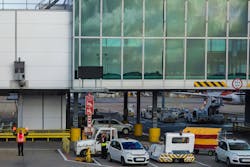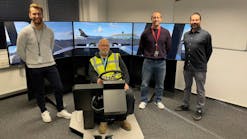The Aviation Industry is Overlooking the Cost of Vehicle Incidents, Warns RTITB Airside
Airport operators and ground handling service providers are incurring unnecessary costs and risking escalating problems by failing to treat vehicle-to-vehicle incidents with appropriate importance, warns RTITB Airside.
“Minor vehicle-to-vehicle incidents can and do escalate into much bigger problems in the airside environment,” says Laura Nelson, Managing Director of specialist training consultancy RTITB Airside. “Managers and directors are often overlooking the real cost of these vehicle incidents, with no plan or system to tackle the problem and little data available to understand the issue.”
Vehicle-to-vehicle incidents airside, such as those involving rover vehicles, baggage tugs, pushback tractors, hi-loaders and other GSE, all contribute to the estimated $10 billion global cost of ground incidents each year.
“Our experience suggests that many drivers don’t report vehicle-to-vehicle incidents and when they do, they are not investigated or even recorded in the same manner as an incident involving an aircraft” she says, explaining that vehicle-to-infrastructure incidents are also a problem.
Unreported damage to a vehicle, or infrastructure, usually worsens over time, making it more expensive to fix, while extending downtime and increasing the potential of impact on all-important aircraft turnaround times.
“One of the biggest potential costs comes where the impaired equipment might cause damage to aircraft, escalating a small incident in to a much bigger and more expensive problem,” she says. “For instance, if a van makes light contact with a hi-loader when parking, a sensor could get damaged which could then cause the hi-loader to later come into contact with an aircraft.”
All vehicle-to-vehicle incidents should be reported according to the guidelines of the International Air Transport Association*, but also because a robust system of reporting and analysis will help operators investigate the root causes and find ways to prevent incidents happening again. Vehicle to vehicle incidents are clear indicators that there is a weakness in driver training or supervision, they are an indicator that risks exist and have the potential to escalate swiftly when the vehicle to vehicle becomes a vehicle to aircraft accident.
The danger is that unreported airside incidents become the norm in day-to-day operations, costing time and money and reinforcing a poor airside safety culture.
“Addressing behaviors, challenging complacency and ensuring delivery of the correct driver training and supervision all help to reduce accidents and incidents,” says Laura. “This improves efficiency, driving down the costs of repairs and downtime and also makes the airside environment a safer place for staff and passengers alike.”
To support team leaders, managers and directors in addressing this problem RTITB Airside has developed a free resource which enables a quick and simple review of the airfield and identification of areas where help is needed. The free Hazards and Occurrences Checklist is available to download from the RTITB Airside website.





